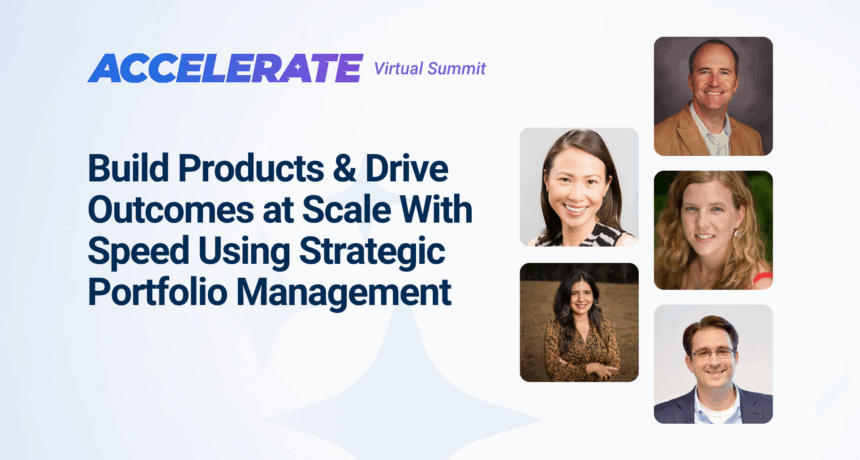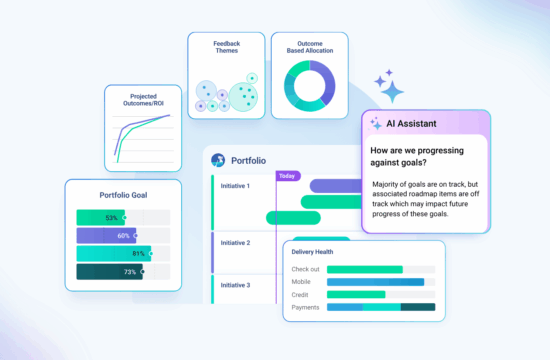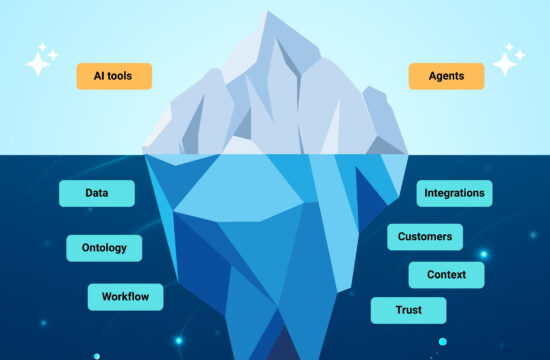Key Takeaways From the Accelerate 2025 Strategic Portfolio Panel
In today’s fast-paced, AI-powered world, the pressure to deliver product outcomes at scale, with speed, is immense. But how can organizations ensure this rapid “innovation” or “delivery” isn’t just a “nightmare” of disconnected activity?
At Accelerate 2025, Dragonboat’s Founder & CEO, Becky Flint, sat down with four industry leaders—Aaron Hall (Carfax), Cristin Kenney (Fortellar), Gloria Ramchandani (Copado), and John Field (Talogy)—to share their perspectives and best practices on questions such as:
- How do strategy, portfolio management, and product management intersect, and how has this evolved in your organization?
- How are modern product leaders making decisions around portfolio investments today? How do you see this evolving in the AI era?
Here are the essential takeaways from their conversation.
Stop Thinking in Silos. Start Thinking in Systems.
Cristin Kenney captured it perfectly: organizations must see “strategy, portfolio, [and] product work as really one system” where teams understand how product-level results feed back to inform strategy, creating a vital alignment loop.
Aaron Hall brought this to life with a metaphor: the three areas are a “three-legged stool.” Focus on only two, he warned, and your product investments are “destined to fail, or, at best, be sub-optimal.”
John Field added perspective on strategic hierarchy: “Business strategy needs to drive the product strategy, which then drives both the portfolio management and product management.” Without clarity at the top, product teams risk filling the void with misaligned work.
Gloria Ramchandani highlighted a practical solution: the rise of “product strategy and operations.” This function helps PMs “connect the dots” between a feature request and overarching business goals. It’s the bridge from what John Field calls “qualitative alignment”—where PMs can verbally explain the strategy—to “quantitative alignment,” where dashboards show real impact on strategic goals.
Bridge the Chasm Between Strategy and Execution
As Becky put it: “Strategy without execution is just a dream, but execution without strategy… is a nightmare.”
The Dangers of a Disconnect
- “The Other Projects”: Aaron Hall described the challenge of playing “whack-a-mole” with initiatives that “crop up that are not tied to our investment framework.” Rogue projects drain resources without contributing to defined goals.
- Innovation Without a Customer: Gloria Ramchandani noted teams can get excited and build a “cool piece of technology that doesn’t have a persona and use case.” Without clear customer value, work isn’t ready to ship.
Forging a Stronger Connection
- Dampen the Whip Crack: John Field’s metaphor illustrates how a small strategic shift can feel like a violent “crack of the whip” to delivery teams. His approach? Lead with a “posture of curiosity”—ask about potential impact rather than issuing directives.
- Act as a Buffer: Gloria Ramchandani sees a leader’s role as shielding teams from shifting executive priorities, letting them focus while navigating changing business needs.
- Balance Speed with Modern Governance: Cristin Kenney emphasized the push and pull between speed and governance. The key isn’t eliminating rules but modernizing them—using transparent tools so teams can move quickly, autonomously, and aligned.
Practical Advice to Take Home
Each panelist offered practical advice for audiences to bring back to their organizations:
- John Field: Centralize portfolio information from the start to avoid chaos. To say “no” gracefully, create a “Museum of Good Ideas,” shelving requests respectfully without shutting down innovation.
- Cristin Kenney: Make sure everyone is “speaking the same language.” Define terms like “initiative” and “epic” consistently. And remember: “Don’t let perfection be the enemy of good,” especially when exploring new tech like AI.
- Gloria Ramchandani: PMs should “fall in love with the problem, not the solution.” Customer needs, not technology, drive innovation.
- Aaron Hall: “Hope is not a method.” An optimized portfolio requires deliberate effort with “the right people… processes, the tools… the strategy… and just a wee bit of patience.”
- Becky Flint: Portfolio management is more than rolling up tasks. A “product investment” is tied to a customer, a problem, and a business outcome. Work tickets alone don’t create value; they’re just components of a larger, strategic investment.
Final Takeaway: Modern SPM in the AI Era
To accelerate outcomes at scale, organizations need a modern Strategic Product and Portfolio Management (SPPM) approach. Move away from scattered spreadsheets and presentations toward a unified platform that serves as the single source of truth for product investment.
This model treats strategy, portfolio, and product not as linear steps but as an interconnected system. Strategy informs portfolio decisions, which guide product execution—and the outcomes feed back to refine strategy in real-time. This dynamic, data-driven loop connects vision directly to value delivery, empowering teams to move faster, stay aligned, and win in a rapidly changing world.



